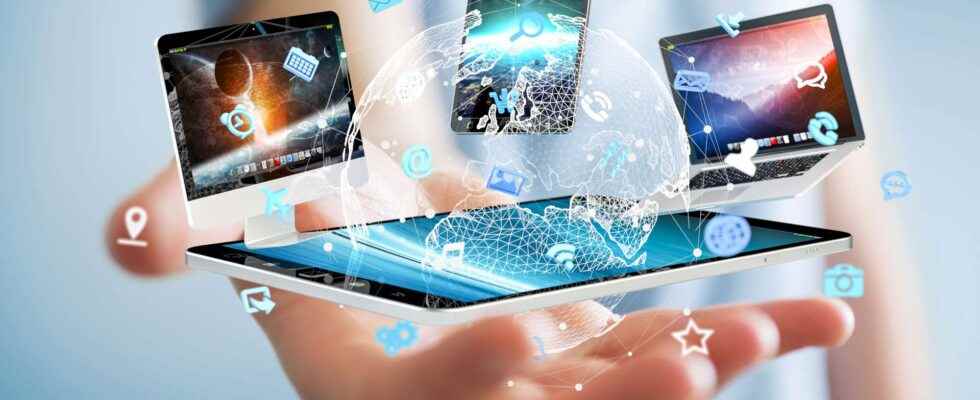The word digital was officially retained by the Commission for the enrichment of the French language to officially replace digital. It comes from latin numerus which means number. It is a language from binary systems (groups zero and one). It refers to the digital revolution which accelerated at the turn of the XXIe century.
The digital revolution, an event comparable to the discovery of printing
The digital revolution is a phenomenon of comparable magnitude to the discovery of printing by Gutenberg in the XVe century or the industrial revolution of the late eighteenthe century. It can be dated from the invention of the model by the British mathematician Alan turing in 1936. The Colossus (the first electronic calculator based on the binary system), created in 1943 in the suburbs of London, is the direct result. We can summarize the digital revolution in a few dates:
- 1971: invention of microprocessor and sending the first e-mail ;
- 1981: the first personal computer appears in homes;
- 1983: marketing of the first mobile phone by Motorola;
- the digital revolution accelerated from the 1990s by the democratization of inventions previously conceived (smartphone, personal computer, emails, Internet, etc.).
The use of digital technology has become considerably commonplace
Some 4.54 billion and 5.19 billion people worldwide use Internet and cell phones. 49% of the world population uses social networks (3.8 billion people), 99% through a mobile. Outside of Spam, 293 billion emails are sent daily around the world. France is by no means late: 83% of its population is connected to the Internet, 84% has a smartphone.
What is IT for?
The uses of digital technology are comparable to those of printing in 1914: no aspect of economic, social, cultural, strategic or political activity escapes them, and we observe the same type of divide between the countries which have it. democratized uses and those who are struggling to catch up with them.
- All of social life is flooded with digital technology
Taking the example of France, more than half of its population reads the press digitally, 60% of its companies have switched to Big data, 400,000 students and employees are trained through Mooc, and digital represents 5.5% of GDP. The State and local communities have given the example since France is the leading European place for e-administration. Political and social protest calls on digital networks.
- The digital divide illustrates development delays
The digital divide refers to inequalities in access to the Internet and computer technologies. It affects rural areas and poor countries: barely 28% of the African population is connected to the Internet. We speak of electronic illiteracy or illectronism.
How does digital work?
The commoditization of digital objects in societies is based on the diffusion of world Wide Web (Web), telecommunications networks and the miniaturization of computers. The development of networks is at the heart of this revolution.
- Internet and world Wide Web at the heart of digital networks
The Web is the hypertext system that operates thanks to the Internet, a global computer network based on packet switching. Data transfer protocols are the languages that allow information to flow in theair, thanks to optical fibers and metal cables.
- Digital devices
Turing’s model is at the origin of the digital hardware revolution which manifests itself in the form of computers, smartphones, tablets, etc.
You will also be interested
Interested in what you just read?
.
fs2
